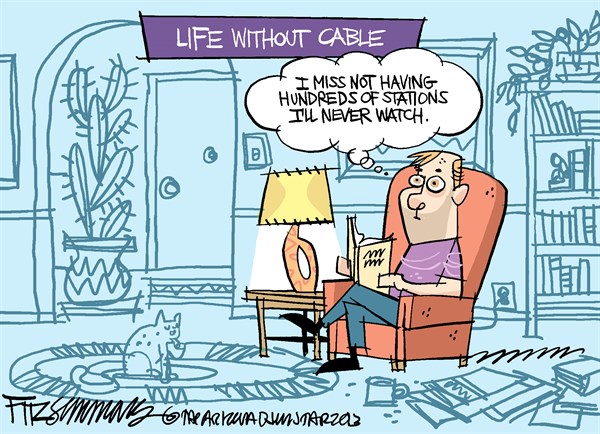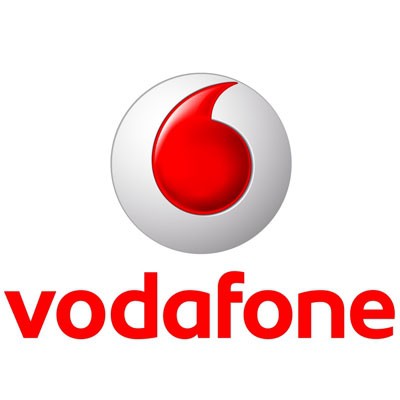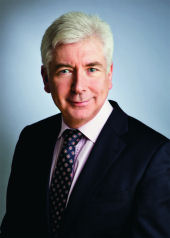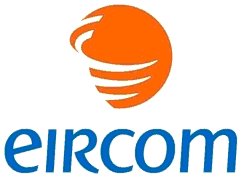
Marco S. was so frustrated by the line running outside his local Comcast store, he snapped this photo. At least the weather was nice.
Comcast customer Timothy Lee made a grave error in judgment. He decided to return his Comcast-owned cable modem to a Comcast customer service center… on a Saturday!
Long-time Comcast customers know only too well a Saturday visit to Comcast represents a major outing, with long lines that often extend outside and up to an hour or more waiting time.
Lee compared his visit to waiting in line at the post office, but that’s not really true except during the holidays — the post office is better organized and usually lacks the heavy-duty bulletproof glass and surly attitudes that separate Comcast’s “customer service agents” from their unhappy customers.
Predictably, Lee waited more than 30 minutes before his number was up.
Lee’s predicament is all too familiar. His only choice for high-speed Internet access is Comcast, and the cable company knows it. So just like your local Department of Motor Vehicles, there is no harm done if Comcast opens a customer service center with 10 available windows staffed by only two employees, one happily munching on pretzels ignoring the concert-length line during his 20-minute break.
Time Warner Cable’s service centers are not much better, although they usually have fewer windows to keep customers from getting their hopes up. Comcast’s bulletproof glass is also not in evidence at TWC locations, although the burly bank-like security guard is very apparent at some centers in sketchy neighborhoods. Time Warner Cable also offers seating, but visit wealthier suburban locations when possible, where comfortable couches replace the nasty hard benches or plastic furniture often found downtown.
Comcast was instantly ready to offer up the usual excuses:
Your recent visit to our Washington D.C. service center is certainly not the experience we want anyone to have. We’ve been working on a multi-year project to revamp the hundreds of service centers we have around the country to better serve customers. As part of that project, we will be remodeling the Michigan Avenue location and will open another service center in the District in early 2015. We’re also introducing more options for customers to manage their accounts, including a new program we’re starting to roll out with The UPS Store to make them an authorized Comcast equipment return location.
It’s always better at Comcast sometime in the yet-to-be-determined future. Until then, suffer.


 Subscribe
Subscribe Just when you thought the cable television lineup could not possibly get any larger, insiders at Comcast are anticipating one of the possible conditions that could be imposed by the Federal Communications Commission in return for approval of its merger with Time Warner Cable is an agreement to carry more independently owned cable television channels.
Just when you thought the cable television lineup could not possibly get any larger, insiders at Comcast are anticipating one of the possible conditions that could be imposed by the Federal Communications Commission in return for approval of its merger with Time Warner Cable is an agreement to carry more independently owned cable television channels. The independent networks fear they will never become viable if they cannot reach the nearly one-third of the country’s cable television subscribers a combined Comcast and Time Warner Cable would serve. Others question whether they will be given fair consideration if their networks compete with an existing Comcast or Time Warner Cable-owned channel.
The independent networks fear they will never become viable if they cannot reach the nearly one-third of the country’s cable television subscribers a combined Comcast and Time Warner Cable would serve. Others question whether they will be given fair consideration if their networks compete with an existing Comcast or Time Warner Cable-owned channel. Comcast’s claim it already carries nearly 180 independent networks drew scrutiny when the company released the list of networks. At least half were added-cost international or pornography networks — all sold at a higher cost. More than a dozen others were independent sports channels packed into a higher-cost sports tier. Most of the rest were regional networks given very limited exposure. BlueHighways TV, which features bluegrass music, is seen in only 210,000 Comcast homes, mostly in Tennessee. That is less than 1% of Comcast’s total subscriber base.
Comcast’s claim it already carries nearly 180 independent networks drew scrutiny when the company released the list of networks. At least half were added-cost international or pornography networks — all sold at a higher cost. More than a dozen others were independent sports channels packed into a higher-cost sports tier. Most of the rest were regional networks given very limited exposure. BlueHighways TV, which features bluegrass music, is seen in only 210,000 Comcast homes, mostly in Tennessee. That is less than 1% of Comcast’s total subscriber base. Cable operators leveraged their near-monopoly on high-speed broadband and commercial business services to lead the entertainment and publishing industry in profitability, according to a report from consultant EY (formerly Ernst & Young.)
Cable operators leveraged their near-monopoly on high-speed broadband and commercial business services to lead the entertainment and publishing industry in profitability, according to a report from consultant EY (formerly Ernst & Young.)

 But some critics contend $664 million is insufficient to wire every building in Ireland for fiber service and suspect the government may try to backtrack and choose fiber to the cabinet or wireless service for the most isolated communities that could prove extremely expensive to reach with fiber.
But some critics contend $664 million is insufficient to wire every building in Ireland for fiber service and suspect the government may try to backtrack and choose fiber to the cabinet or wireless service for the most isolated communities that could prove extremely expensive to reach with fiber.